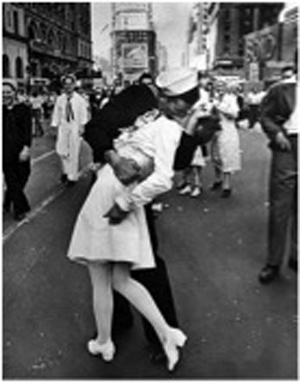

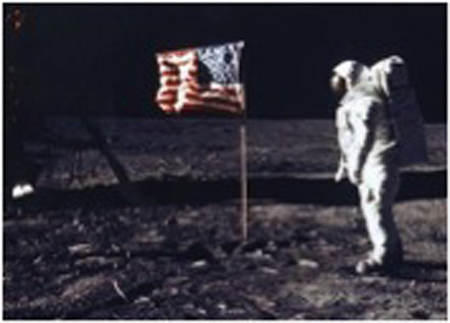
Throughout history, imagery has proven to be an astounding political and social force, invoking emotions through one universal language. When many of us think about the end of World War II, we envision Eisenstaedt's "The Kiss in Times Square." Nick Ut's heartbreaking image helped bring an end to the Vietnam War by bringing the war into the homes of Americans, who then took to the streets and the ballot box. Neil Armstrong captured the world's first glimpse of humanity on the moon when he took a picture of Buzz Aldrin. As co-founder and CEO of a business that captures the important events of our time, I am acutely conscious of the fact that our photographers and filmmakers are not only documenting stories, but their work is inspiring change.
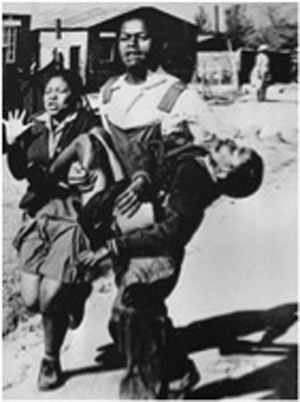
I grew up in Apartheid South Africa. From an early age, I found it difficult to witness what I believed was the worst affliction that could befall a society. I came to believe that there was no hope, no end to this institutionalized racism in sight. I was wrong. With strong support from the media, with images like this one of Hector Pieterson, a 12-year old boy carried by a fellow student after being shot by police on June 16, 1976, during a protest, Apartheid ended 15 years ago.
But now an even worse affliction has befallen my homeland; AIDS is exacting an enormous toll in South Africa and elsewhere. Imagery, however, has also helped tell the story of the fight against AIDS, reducing the stigma associated with the disease, galvanizing individuals, corporations and governments to take on the battle against the pandemic.
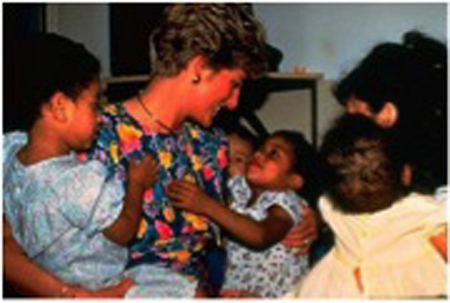
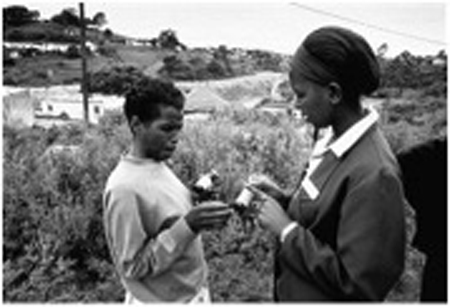
The world has mobilized to fight AIDS. From Princess Diana, who visited AIDS orphans in Brazil in 1991, to home-grown health workers like this one in South Africa, many have worked for change, and images like these have helped push this change. We have moved from almost no one receiving treatment for HIV in the developing world to more than four million people in low- and middle-income countries receiving AIDS medicines this year. HIV infection rates are finally slowing globally, and deaths due to HIV/AIDS have fallen over the last two years. Through the Global Fund to Fight AIDS, Tuberculosis and Malaria - the world's largest global health financing mechanism, leveraging U.S. and other funding to fight AIDS in 138 countries -and many other NGOs and governments, what was once viewed as an unbeatable pandemic shows signs of slowing. The business community has also played its part by lending its expertise to the battle - in our case, with imagery. Together, the world is turning a corner in this fight.
Remarkable milestones in the fight against AIDS are within sight. We have the power to end all mother-to-child transmission of the disease. With continued investments, in just five years no mother will have to fear passing on the disease to her child. Within the next decade, AIDS medicines could be available to everyone who needs them. Imagery assists and inspires people and governments to tackle problems like this pandemic.
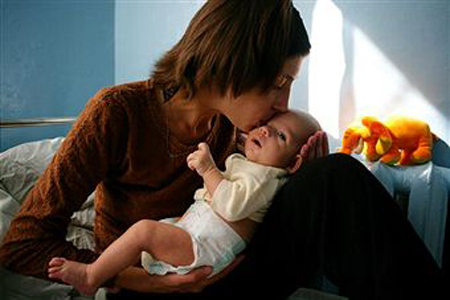
This is an image of an HIV-positive mother and her HIV-free baby. I believe we will see many more such images of hope in the coming years, as image-makers tell the world that AIDS can become a disease to live with and to be conquered, rather than a death sentence.
Today, on World AIDS Day, I call on all of the media to take up this message of hope, spreading the powerful stories of success in the fight against AIDS that are coming from countries around the world. We must stay the course, notwithstanding a global economic crisis and competing domestic priorities, so that we can continue, with our colleagues in the media, to show the positive impact of investments in global health and particularly HIV/AIDS.
Times Square: Photo by Alfred Eisenstaedt/Pix Inc./Time & Life Pictures/Getty Images; Vietnam: AP Photo/Nick Ut; Moon: Photo by Nasa/Getty Images; Hector: Photo by Sam Nzima; Diana: Photo by Ken Goff//Time Life Pictures/Getty Images; Medicines: Photo by Per-Anders Pettersson/Liaison Agency; Mom: Photo by Brent Stirton/Getty Images for the GBC
Jonathan Klein is a Board member of Friends of the Global Fight Against AIDS, Tuberculosis and Malaria and also serves on the Corporate Advisory Board of the Global Business Coalition on HIV/AIDS, Tuberculosis and Malaria. He is the co-founder and Chief Executive Officer of Getty Images.